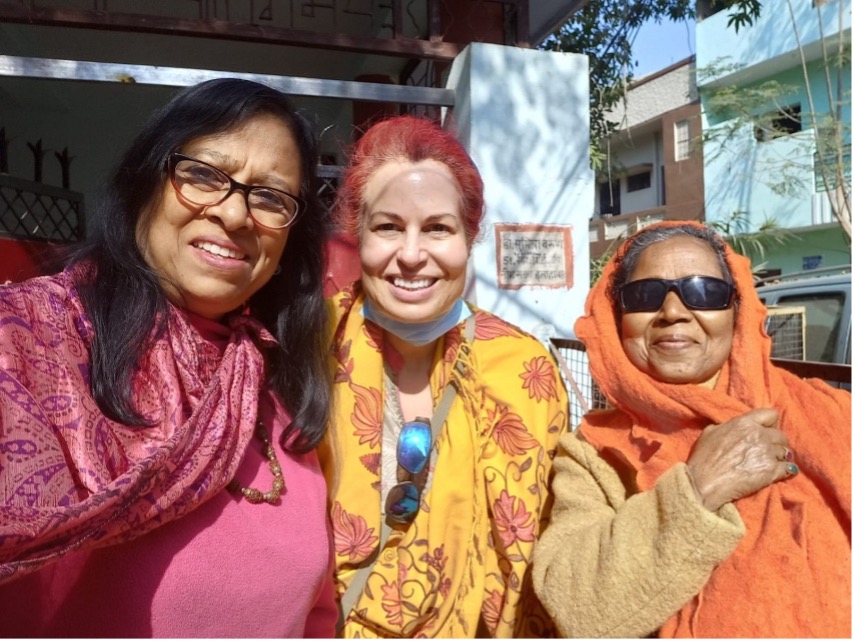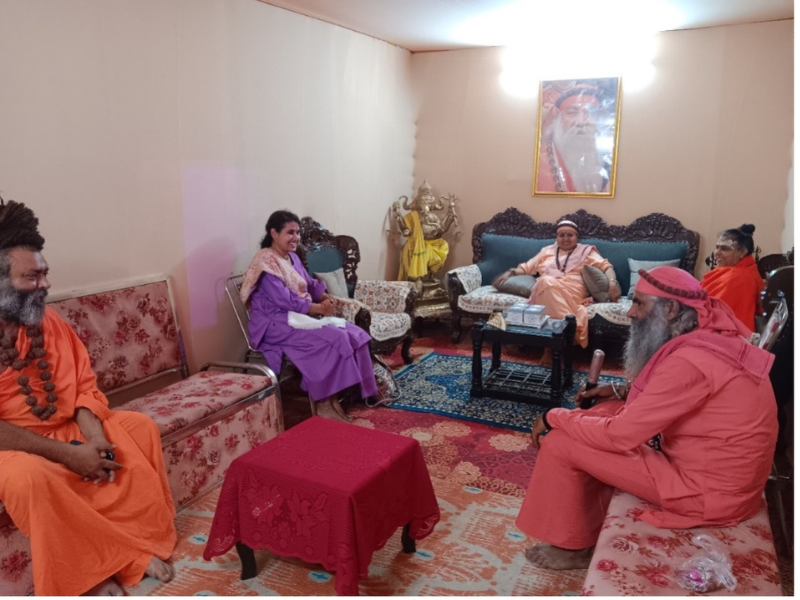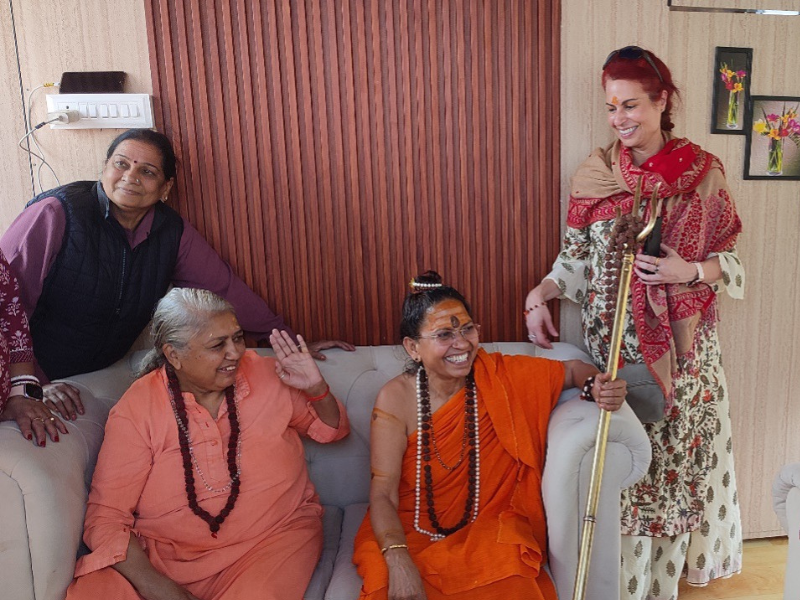India’s Maha Kumbh Mela serves as both a spiritual confluence and a platform for social transformation. Known as the largest gathering in the world, millions of devotees gathered in Prayagraj to participate in ritual bathing, prayers and ascetic practices along the sacred rivers of the Ganga, Yamuna and Saraswati.

Among them was Antoinette DeNapoli, John F. Weatherly Professor of Religion and chair of the religion department, who has dedicated over two decades to studying Hindu ascetic traditions.
“I have spent 24 years immersing myself in sadhu culture, studying Hindi and Sanskrit, and living in ashrams and temples as a participant observer,” DeNapoli said. “Through this immersive experience, I have sought to understand with greater cultural sensitivity what it means to live as a sadhu, Hindu society’s most unconventional way of life, viewing the world through sadhus’ eyes.”
DeNapoli’s research seeks to understand how women navigate religious spaces traditionally dominated by men. While female ascetics are a minority in Hindu monastic culture, their presence at the Kumbh Mela is growing. By exploring and documenting their experiences, DeNapoli aims to shed light on how these women are redefining religious leadership, challenging patriarchal structures and using devotion as a tool for empowerment.
The Role of Devotion in the Kumbh Mela

DeNapoli said that devotion, or bhakti, is central to the Kumbh Mela experience. Hindus express their faith through ritual practices, acts of service (seva), and deep connections with deities and spiritual leaders. The month-long observance known as kalpavas calls devotees to temporary renunciation, fostering reflection and spiritual discipline.
“The Kumbh Mela is an ideal venue for my anthropological research as a teacher-scholar of South Asian religions,” DeNapoli explained. “It is the gathering place for sadhus of Indian and non-Indian origin, representing various Hindu sects, movements, and traditions within and beyond the subcontinent. By being there, I have access to a substantial sadhu population.”
The Rise of Female Ascetic Leadership
While male sadhus have long dominated Hindu ascetic culture, DeNapoli said female ascetics are gaining visibility and challenging religious hierarchies. Their increasing prominence at the Kumbh Mela signals an evolution in Hindu monastic traditions, where women are asserting their spiritual authority in historically male-dominated spaces.
At the heart of this transformation is the Hindu concept of Shakti, the divine feminine energy believed to sustain the universe. DeNapoli explained that female ascetics invoke Shakti to claim religious authority and redefine women’s roles in spiritual practice.
DeNapoli said Shakti has a double meaning as both the great goddess and the dynamic impersonal power through which Shakti creates and sustains the world.
Transformative Teaching

For DeNapoli, teaching is at the heart of her research and academic work.
“Teaching is absolutely the cornerstone of what I do at TCU,” she explained. “I keep going back to India and learning about the culture because it gives me another opportunity to come back to my students and say this is what's happening, and this is how lived religion is embodied.”
DeNapoli emphasized that the daily lived experiences of Hindus, especially how fundamental religious values intersect with opportunities for spiritual development and leadership, are often overlooked in traditional narratives.
“It’s fascinating how people embody their religious practices every day,” DeNapoli said. “They don’t necessarily analyze these values, but they live them. That’s what I want to show my students, that these values create space for change, for underrepresented people to find a platform and make their voices heard.”
DeNapoli sees her role in the classroom as that of a guide. Her research offers students an alternative view of Hinduism, one that focuses on the lives of women, particularly those from subordinated castes and communities.
“I tell my students that the study of religion is a journey toward making the strange familiar and also making the familiar strange,” she said. “I want to take them on a journey, helping them understand different religious perspectives across time and space. It’s about offering them tools to think critically about how traditions evolve, how they can be transformative and how people’s voices can be heard, even those who have been historically oppressed.”
Through this approach, DeNapoli hopes to inspire her students to appreciate religious differences and understand the complex intersections of identity, spirituality and social transformation.



